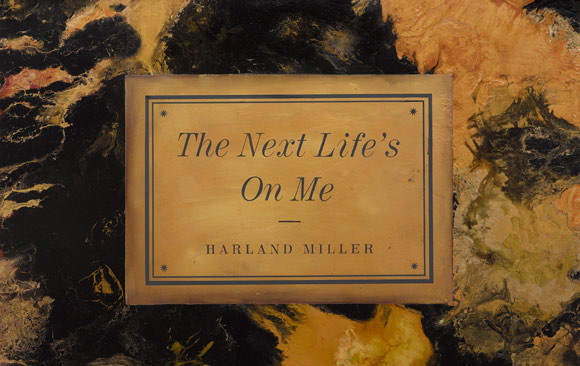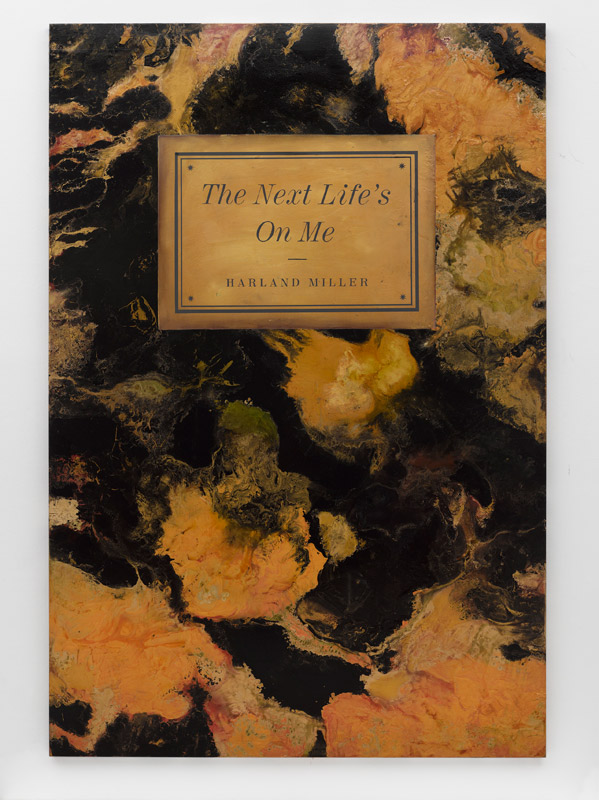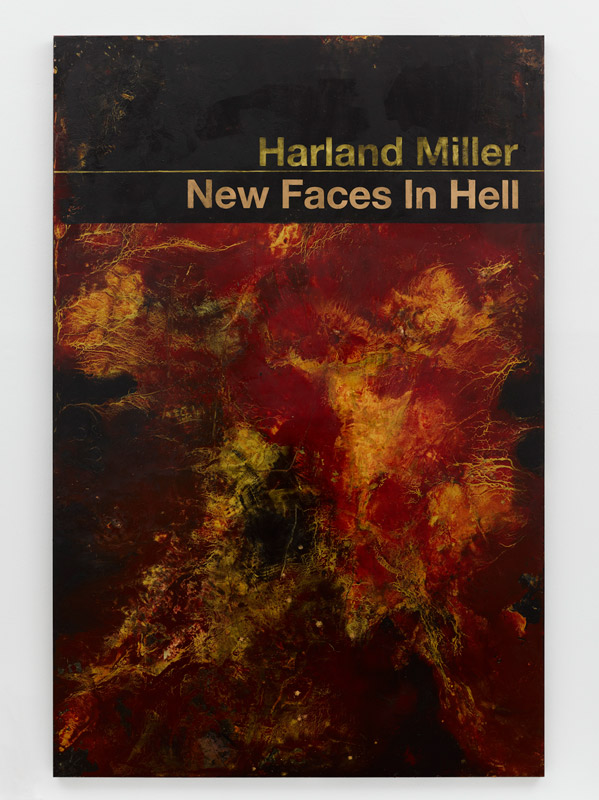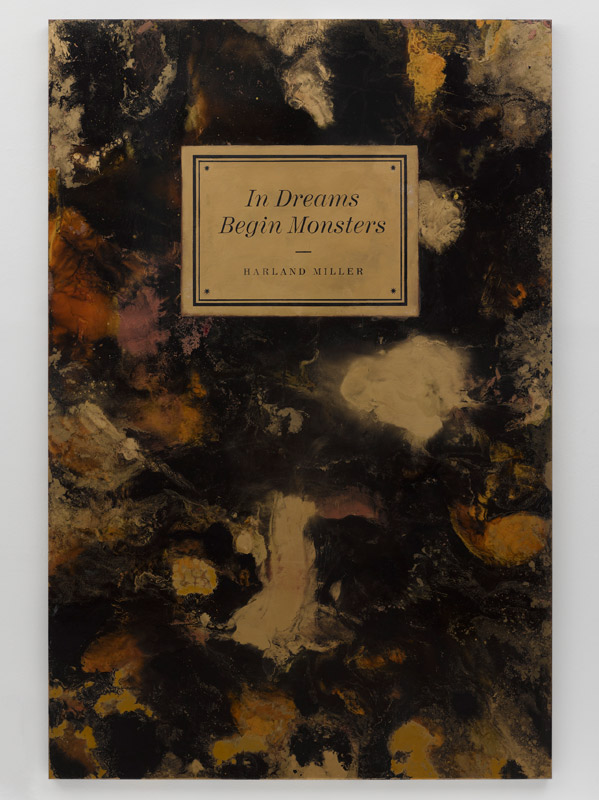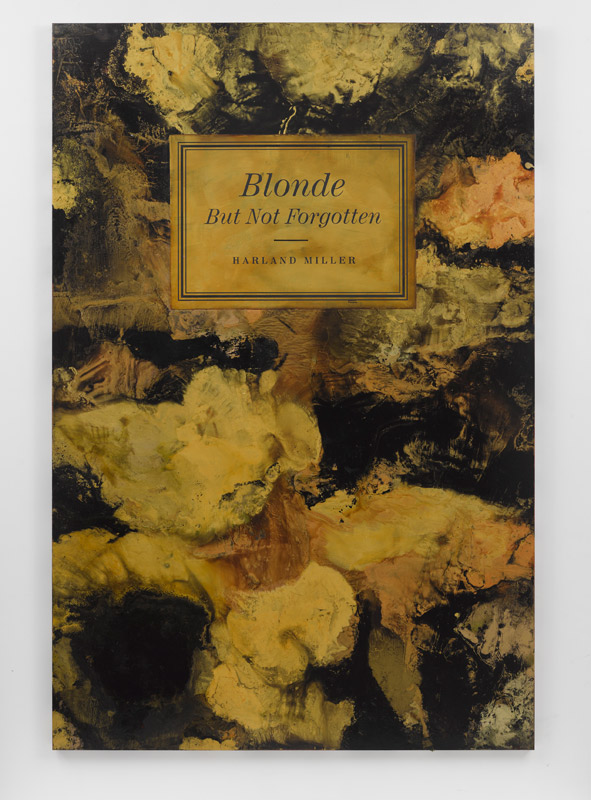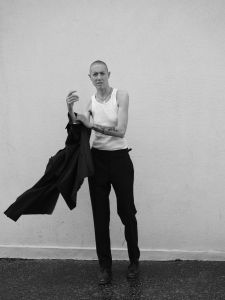We talk poetry with the writer and artist whose current White Cube Hoxton exhibition is based on vintage Penguin paperbacks
It seems it takes a writer to paint words, both abstract ones and IRL. Harland Miller is both an artist and a writer, and you can tell. At his current exhibition — the last at White Cube’s Hoxton Square gallery — Miller is showcasing two new series of work; a handful of figurative creations and a group of paintings based on the classic covers of Penguin poetry books where fictional titles mix with paint.
Having pursued a merger between art and literature for over a decade, Miller — “using luxurious metallic paints on heavy, smooth walnut panels” — has become a bit of an authority on this artistic niche. Painting in a vertical manner (Miller starts with a blank canvas on the floor), fictional titles share the space with deep and rich shades of black, gold and red. The point of Miller’s work is two-dimensional; allowing the viewer both a visual and an intellectual start to the tale, what comes next is up to you and your imagination…
“I think poets go for sound; if it sounds good that’s okay, it doesn’t always have to be rational”
David Hellqvist: Do you have a favourite poet?
Harland Miller: No, not really but I do like John Cooper Clarke just because he was writing around the time when poetry was very square and with his particular style of punk poetry he switched a lot of people onto a wider selection of verse and literature in general, a bit like Bob Dylan did.David: What about his work do you like? Any particular poems you are fond of?
Harland: One verse of his I’ve always liked is this one: “You went to a progressive psychiatrist — he recommended suicide before scratching your name off his bad list and pointing the way outside.” I like this — it’s evident when you read it that it’s very funny, but he was using poetry to express hate rather than love — just turning expected content on its head. I’ve always liked that but it’s not easy to do well.David: How would you define the relationship between painting and poetry?
Harland: I think poets go for sound; if it sounds good that’s okay, it doesn’t always have to be rational and it comes from a feeling you have about something — or someone — a place or a time. It isn’t tied down as a form of expression and it doesn’t always have to make sense. I always liked that the abstract expressionists were trying to paint sound or the subconscious — these intangible and abstract aspects are all in the poetry paintings I make.
“As a kid I never made the difference between these forms of
high and low culture and I think that has had a lasting effect on my work”
David: What poetry book did you base the poet paintings on?
Harland: No book in particular — I just loved that they looked quite feminine and psychedelic.
David: Do you write poems yourself?
Harland: Yes, but not very well… I try not to show them to anyone!
David: Where did the idea come from to paint fictional covers?
Harland: When I was a kid my dad used to go to sales in Leeds and buy big boxes of books for a fiver.He was always hoping that within one of these boxes he would find a priceless first edition but he never did. The boxes were a real mixture of books, ranging from one or two classics through to borderline pornography. As a kid I never made the difference between these forms of high and low culture and I think that has had a lasting effect on my work.
David: What is it you like about Penguin covers?
Harland: When I moved to Paris for a while in the 90s, I found a lot of books that inspired me but I couldn’t understand the titles so I started making up my own. That then became the part of my work I enjoyed the most.The Penguin books were really great for that because they threw all the focus on to the title of the book and the different colours they came in really affected the way in which you would read the text. So it was great to really experience the way that colour is so powerful. For example, I had a text that read ‘DEATH — What’s in it for me?’ I painted it in pink and the general reaction was of levity and humour. I re-worked this text in purple and it became quite theatrical and overly dramatic, in green the reaction was of discomfort and turning away. This in turn feeds back into my own poems in so far that when I’m composing verse I try to think of it as being in a certain shade with the sense that it might have the same effect.
Harland Miller’s The Next Life Is On Me is at the White Cube Hoxton until December 22, 2012
